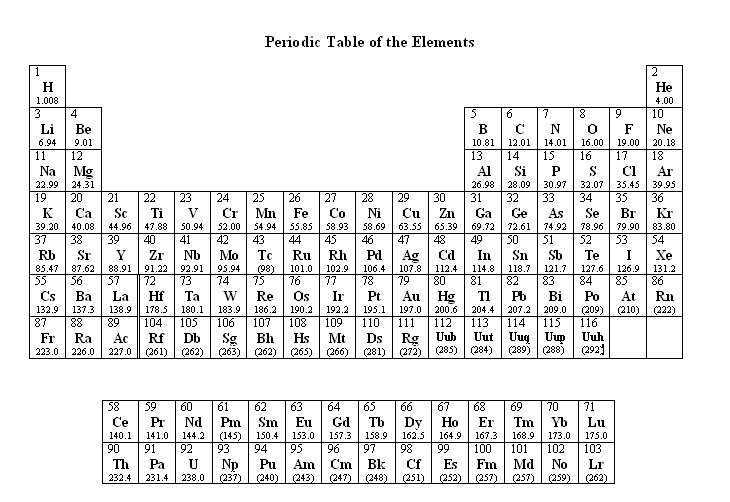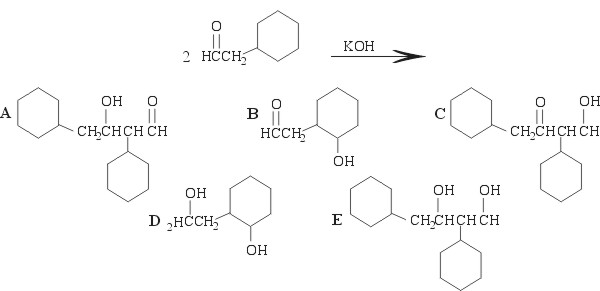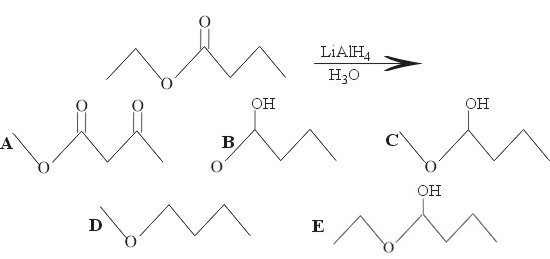Diagnostic Test - Natural Sciences
Next
0 of 10 questions completed
Questions:
- 1
- 2
- 3
- 4
- 5
- 6
- 7
- 8
- 9
- 10
Information
This is a diagnostic test for the Natural Sciences Section. Please read the following before starting:
1. You will have 10 minutes to finish 10 questions.
2. An exam overview is provided, allowing you to mark questions for review and skip between questions easily.
3. You will have a chance to review the exam before completing it.
4. To unlock more tests, upgrade your account
Good luck!
You have already completed the quiz before. Hence you can not start it again.
Exam is loading ...
You must sign in or sign up to start the exam.
You have to finish following exam, to start this exam:
Results
0 of 10 questions answered correctly
Your time:
Time has elapsed
You have reached 0 of 0 points, (0)
| Average score |
|
| Your score |
|
Categories
- Not categorized 0%
-
Your estimated OAT Score is shown for full length tests. To unlock all OAT Tests and Material to help you score higher, upgrade your account!
-
Question 1 of 10
1. Question
1. Which of the following is the pathway taken by the sperm in the male reproductive system?
CorrectRemember the mnemonic “SEVEN UP”:
S—Seminiferous tubules
E—Epididymus
V—Vas deferens
E—Ejaculatory duct
N—N/AU—Urethra
P—PenisIncorrectRemember the mnemonic “SEVEN UP”:
S—Seminiferous tubules
E—Epididymus
V—Vas deferens
E—Ejaculatory duct
N—N/AU—Urethra
P—Penis -
Question 2 of 10
2. Question
2. Mosses belong to this division of the plant kingdom whose characteristics include: flagellated sperm and lack of xylem.
CorrectMosses belong to the division Bryophyta, which includes mosses, liverworts, and hornworts. The dominant generation of the bryophytes is the haploid gametophyte generation. The male gametangium produces flagellated sperm that require water to swim to the eggs. Because bryophytes do not have the specialized vascular tissues such as xylem and phloem, they not have true roots, true stems, or true leaves. Choice A. Tracheophyta includes vascular plants, which have true roots, true stems, and true leaves. Lycophytes and pterophytes fall under this category. Choice C. Coniferophyta includes pines, firs, cedars, and others. The conifers are naked seeded plants, and belong to a group called the gymnosperms. Choice D. Angiosperm is the flowering plant that has covered seeds.
IncorrectMosses belong to the division Bryophyta, which includes mosses, liverworts, and hornworts. The dominant generation of the bryophytes is the haploid gametophyte generation. The male gametangium produces flagellated sperm that require water to swim to the eggs. Because bryophytes do not have the specialized vascular tissues such as xylem and phloem, they not have true roots, true stems, or true leaves. Choice A. Tracheophyta includes vascular plants, which have true roots, true stems, and true leaves. Lycophytes and pterophytes fall under this category. Choice C. Coniferophyta includes pines, firs, cedars, and others. The conifers are naked seeded plants, and belong to a group called the gymnosperms. Choice D. Angiosperm is the flowering plant that has covered seeds.
-
Question 3 of 10
3. Question
3. Which part of the brain controls respiration?
CorrectAll regions of the brain work together to enable animals to function properly, but each region is responsible for specific roles. Choice D. Medulla oblongata controls breathing, heart rate, and gastrointestinal activity. Choice A. Pons is the relay center that allows communication between the cortex and cerebellum. Choice B. Cerebellum helps maintain balance, hand-eye coordination, and controls timing of rapid movements. Choice C. Occipital lobe, which is one of the four lobes of the cerebral cortex, is the visual processing center. Choice E. Cerebral cortex functions in sensory input, memory, and creative thinking.
IncorrectAll regions of the brain work together to enable animals to function properly, but each region is responsible for specific roles. Choice D. Medulla oblongata controls breathing, heart rate, and gastrointestinal activity. Choice A. Pons is the relay center that allows communication between the cortex and cerebellum. Choice B. Cerebellum helps maintain balance, hand-eye coordination, and controls timing of rapid movements. Choice C. Occipital lobe, which is one of the four lobes of the cerebral cortex, is the visual processing center. Choice E. Cerebral cortex functions in sensory input, memory, and creative thinking.
-
Question 4 of 10
4. Question
4. The H band of a muscle cell contains
CorrectA sarcomere is composed of the thin filaments (actin) and the thick filaments (myosin). It can be divided into a few regions as follows:
-Z line: vertical boundary of a single sarcomere
-M line: the center of a sarcomere
-I band: the region containing actin only
-H band: the region containing myosin only
-A band: the region where myosin and actin overlapIncorrectA sarcomere is composed of the thin filaments (actin) and the thick filaments (myosin). It can be divided into a few regions as follows:
-Z line: vertical boundary of a single sarcomere
-M line: the center of a sarcomere
-I band: the region containing actin only
-H band: the region containing myosin only
-A band: the region where myosin and actin overlap -
Question 5 of 10
5. Question
5. What is the pressure in a 60 liter container that contains 15 moles of helium gas at a temperature of 25 degrees C?
CorrectThe ideal gas law states that PV = nRT, where P = pressure, V = volume, n = number of moles of gas, R = gas constant, and T = temperature in Kelvin. We are given all the information we need to solve this equation. All we need to do is substitute the numbers into the ideal gas law.
n = 15 moles
V = 60 L
T = 25 degrees C = (25+273) K = 298 K(P)(60L) = (15mol)(0.082)(298K)
P = (15mol)(0.082atm*L/(K*mol))(298K)/(60L)IncorrectThe ideal gas law states that PV = nRT, where P = pressure, V = volume, n = number of moles of gas, R = gas constant, and T = temperature in Kelvin. We are given all the information we need to solve this equation. All we need to do is substitute the numbers into the ideal gas law.
n = 15 moles
V = 60 L
T = 25 degrees C = (25+273) K = 298 K(P)(60L) = (15mol)(0.082)(298K)
P = (15mol)(0.082atm*L/(K*mol))(298K)/(60L)Exhibit

-
Question 6 of 10
6. Question
6. Find the Molecular formula for the compound with 12.06% of Hydrogen, 71.95% of Carbon, and 15.97% Oxygen
CorrectLet’s think of it this way: in 100 g of this particular compound, 71.95g of it is C, 12.06g is H, and 15.97g is O. Now, let’s divide these numbers by the respective molar masses.
71.95g / (12.011g/mol) = 5.99 mol (C)
12.06g / (1.008g/mol) = 11.96 mol (H)
15.97g / (16.00g/mol) = 0.99 mol (O)We can divide these numbers by the smallest mole number, which is 0.99mol. Then we get,
6.050 (C) ≈ 6
12.080 (H) ≈ 12
1 (O)These numbers, which are already reasonably close to whole numbers without multiplying by whole numbers, indicate the number of atoms present for each element. The correct answer is Choice A.
IncorrectLet’s think of it this way: in 100 g of this particular compound, 71.95g of it is C, 12.06g is H, and 15.97g is O. Now, let’s divide these numbers by the respective molar masses.
71.95g / (12.011g/mol) = 5.99 mol (C)
12.06g / (1.008g/mol) = 11.96 mol (H)
15.97g / (16.00g/mol) = 0.99 mol (O)We can divide these numbers by the smallest mole number, which is 0.99mol. Then we get,
6.050 (C) ≈ 6
12.080 (H) ≈ 12
1 (O)These numbers, which are already reasonably close to whole numbers without multiplying by whole numbers, indicate the number of atoms present for each element. The correct answer is Choice A.
Exhibit

-
Question 7 of 10
7. Question
7.

Where is the triple point located?
CorrectThe triple point is where the three states – solid, liquid, and gas- can coexist. Point A is indeed where the three states meet.
 Incorrect
IncorrectThe triple point is where the three states – solid, liquid, and gas- can coexist. Point A is indeed where the three states meet.

Exhibit

-
Question 8 of 10
8. Question
8.
 Correct
CorrectWhen you see two aldehydes, or two ketones, or an aldehyde and a ketone with alpha hydrogens in the presence of a strong base, always suspect an aldol addition reaction. If there is an extra step with heat involved, be suspicious of an aldol condensation reaction. In this particular problem, we see two aldehydes and KOH, a strong base, and no heat. We can therefore conclude that this will be an aldol addition, where one aldehyde acts as a nucleophile and the other as an electrophile
 Incorrect
IncorrectWhen you see two aldehydes, or two ketones, or an aldehyde and a ketone with alpha hydrogens in the presence of a strong base, always suspect an aldol addition reaction. If there is an extra step with heat involved, be suspicious of an aldol condensation reaction. In this particular problem, we see two aldehydes and KOH, a strong base, and no heat. We can therefore conclude that this will be an aldol addition, where one aldehyde acts as a nucleophile and the other as an electrophile

Exhibit

-
Question 9 of 10
9. Question
9. An infrared absorption band between 2,330-2,000 cm-1 will indicate
CorrectIt is crucial to memorize some of the important IR absorptions.

As you can see in the IR spectroscopy correlation table, the IR absorption of C-C triple bonds and C-N triple bonds occur around 2330-2000cm-1. Therefore, the correct answer is Choice C.
IncorrectIt is crucial to memorize some of the important IR absorptions.

As you can see in the IR spectroscopy correlation table, the IR absorption of C-C triple bonds and C-N triple bonds occur around 2330-2000cm-1. Therefore, the correct answer is Choice C.
Exhibit

-
Question 10 of 10
10. Question
10.
 Correct
CorrectLiAlH4 is a reducing agent that converts carbonyl groups into hydroxyl groups
 Incorrect
IncorrectLiAlH4 is a reducing agent that converts carbonyl groups into hydroxyl groups

Exhibit

- 1
- 2
- 3
- 4
- 5
- 6
- 7
- 8
- 9
- 10
- Answered
- Review